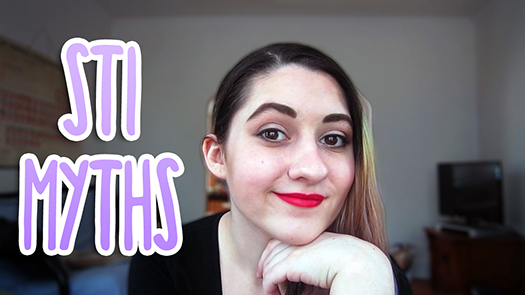Sexuality can be a wibbly wobbly world of confusion. Let’s break down two of the least understood orientations and discuss what they really mean.

Hi, my name is Erika Lynae. I’m 20-years-old and I’m a bisexual-identified female. But this wasn’t always the case! For several years, I actually identified as pansexual. And because both of these sexuality labels tend to have a lot of weird connotations and misconceptions, I thought I’d talk a little bit about them, what each one really means, and the similarities and differences between them.
Bisexuality
Much like homosexuality and lesbianism, the word bisexuality was a diagnostic term from back in the day when marginalized orientations were seen as psychological disorders. That notion was ridiculous at the time and it’s ridiculous now, but the term stuck and was adopted by the community that it was coined to describe.
Now, there are a few different definitions of bisexuality that you’ll hear bisexuals use. Attraction to two or more genders, attraction to your own gender and other genders, etc. My favorite definition comes from the lovely bisexual activist Robyn Ochs who considers bisexuality to be:
The potential to be attracted – romantically and/or sexually – to people of more than one sex and/or gender, not necessarily at the same time, not necessarily in the same way, and not necessarily to the same degree.
Pansexuality
Pansexuality is an orientation that likely emerged in the 1990’s, as non-binary and genderqueer identities started to become more widely understood in our culture. As with bisexuality, its definition can vary slightly from person to person. The most basic definition is attraction to all genders — emphasis on the ALL. In this sense, it’s a label that explicitly rejects the male/female gender binary. Some pansexuals describe it as attraction regardless of gender and say that a person’s gender doesn’t factor at all into whether or not they’re attracted to someone. You’ll sometimes hear the phrase “genderblind,” which is questionable in its phrasing, but hopefully you get what they’re trying to say.
Due to the nature of these two labels, there’s obviously a lot of overlap. Bisexuality’s definition is so encompassing, ranging from attraction to two genders to attraction to all genders, that some people say that all pansexuals are also bisexuals but not vice versa, in the same way that all squares are rectangles but not all rectangles are squares. But honestly, I think assigning a sexuality label to people who are already actively trying to distance themselves from that label by choosing a different one is not cool. And given that each group has its own distinct community, political identity, etc. I think it’s more helpful to view them as similar but separate identities under the larger umbrella of multi-gender attraction.
Now, what if you’re someone who’s attracted to multiple genders, maybe even the entire spectrum, and doesn’t know which label is right for you? Here are some starting questions to ask yourself.
- Are you attracted to multiple genders?
- Does gender play an active role in your attraction to somebody?
- Are you attracted to different genders in somewhat different ways?
- Do you want to identify with a label that has a long history and strong political identity?
- Are you okay with having a somewhat ambiguous label that people may have inaccurate and sometimes negative assumptions about?
If you said yes to any or all of those questions, bisexuality might be a fitting identity for you.
- Are you attracted to all genders?
- Is gender irrelevent to your attraction?
- Do you want a newer, less politically tied identity?
- Do you want to unambiguously broadcast your attraction to those outside the gender binary?
- Are you okay with having a little-known label that people may not be aware of or be confused about?
If you said yes to any or all of those, pansexuality might be a fitting identity for you.
And if you feel both labels reflect the nature of your sexuality, then you can totally identify as both, or neither, or polysexual, which is another similar but less common sexuality. Your identity is yours alone and affects nobody but you. Go with whatever you feel is right.
Thanks for watching, and I’ll see you next time!




